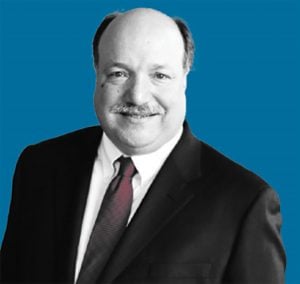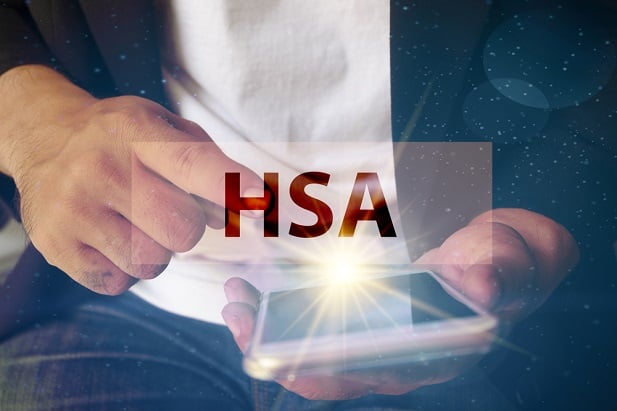 For a numberof reasons, middle-aged adults seem to be mired in the pessimisminherent on the "glass half empty" side of the retirement-outlookfence. (Photo: Shutterstock)
For a numberof reasons, middle-aged adults seem to be mired in the pessimisminherent on the "glass half empty" side of the retirement-outlookfence. (Photo: Shutterstock)
Public opinion polls may offer snapshot-in-time glimpses of thenational psyche, but they often come up short in terms of correctlypredicting the future. This is the good news that came out of arecent Gallup poll that tried to measure American's concerns abouttheir retirement prospects.
|On the face of it, the conclusion you draw from the surveydepends on whether you're a "glass half empty" or a "glass halffull" person. Gallup's results showed about half (51 percent) ofthe respondents "expected to have enough money to live comfortablywhen retired" and about half (46 percent) did not.
| Christopher Carosa,CTFA, is chief contributing editor for FiduciaryNews.com, a leadingprovider of essential news and information, blunt commentary andpractical examples for ERISA/401(k) fiduciaries, individualtrustees and professional fiduciaries.
Christopher Carosa,CTFA, is chief contributing editor for FiduciaryNews.com, a leadingprovider of essential news and information, blunt commentary andpractical examples for ERISA/401(k) fiduciaries, individualtrustees and professional fiduciaries.
Related: 'Crisis of confidence' has retirement saversdoubting their advisors
|So, when it comes to retirement, is America optimistic orpessimistic? Your answer may depend upon which side of the fenceyou sit. The data would appear to support either conclusion.
|Or does it?
|A good analyst doesn't make judgments solely on the reading of afew superficial tea leaves. No, experienced analysts know to lookdeep into the underlying data. In this case, there may be moreevidence for optimism than there might seem at first glance.
|Of course, this optimism is predicated on some narrow, preciselydirected pessimism. Namely, on average, Americans are no better atpredicting next year's Super Bowl winner than they are atpredicting what their retirement might look like a decade or sodown the road.
|And Gallup's statistics seem to bear this out. Nearly 1 out ofevery 4 of today's retirees incorrectly believed they wouldn't haveenough money to retire. When interviewed between 2002 and 2004, 54percent of the 50- to 64-year old non-retirees predicted they wouldhave enough money to retire in comfort. Today, 77 percent of thepeople from that same age cohort (now aged 65 to 80) admit they dohave enough money to live comfortably in retirement.
|What explains this 23 percent gap between prediction and realityis less important than the existence of the gap itself.
|For a number of reasons (mostly dealing with the market shock of2008/2009 and the subsequent real-life economic malaise thatfollowed the market's demise), middle-aged adults seem to be miredin the pessimism inherent on the "glass half empty" side of thefence. According to Gallup, only 44 percent of those aged 30 to 49believe they will have enough money to retire in comfort. Eventhose currently aged 50 to 64 have a confidence level below 50percent.
|Perhaps this represents more of the typical "fear of the future"uncertainty than anything else. You remember what it felt like inhigh school. With the Damocles' Sword of each exam, you fearedwhether you'd ever make it to graduation. Now, years later, youscoff at the misplaced anxiety.
|When employees express misguided pessimism regarding theirretirement prospects, maybe it's better to avoid showing them themath that proves them wrong. Instead, pick a common experience—likehigh school graduation—where they probably felt the same worrisomeemotions and show them how they managed to overcome that fear.
|In other words, convert them from a "glass half empty" to a"glass half full" mindset.
|Read more:
- Millennial pessimism over capitalist system,job-killing AI, affects retirement saving
- Small business owners trust financial servicessector on retirement plans
- Retirement income tops sponsor concerns forplans
Complete your profile to continue reading and get FREE access to BenefitsPRO, part of your ALM digital membership.
Your access to unlimited BenefitsPRO content isn’t changing.
Once you are an ALM digital member, you’ll receive:
- Critical BenefitsPRO information including cutting edge post-reform success strategies, access to educational webcasts and videos, resources from industry leaders, and informative Newsletters.
- Exclusive discounts on ALM, BenefitsPRO magazine and BenefitsPRO.com events
- Access to other award-winning ALM websites including ThinkAdvisor.com and Law.com
Already have an account? Sign In
© 2024 ALM Global, LLC, All Rights Reserved. Request academic re-use from www.copyright.com. All other uses, submit a request to [email protected]. For more information visit Asset & Logo Licensing.








